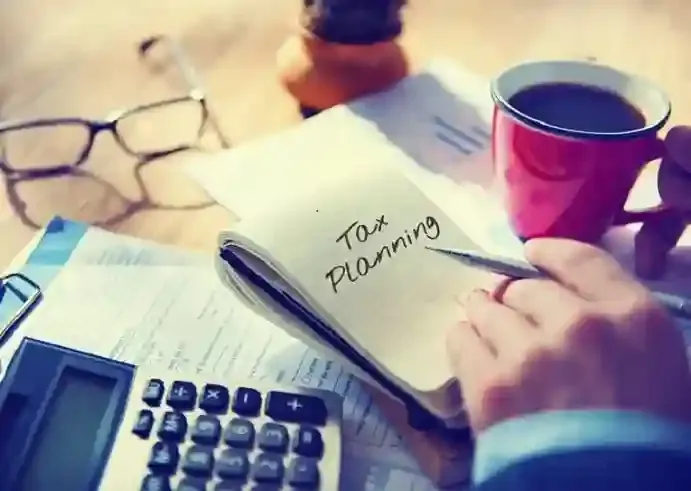- Home>
- Blog>
- Tax-Savings>
- Income Tax Slab 2025-26
Axis Max Life Savings Plans
Trust of 20+ Years in Industry


Written byAbhishek Chakravarti
Taxation & Finance Writer
Published 6th November 2025
Reviewed byAlok Mishra
Last Modified 28th November 2025
Taxation & Finance Expert

New Tax Regime Income Tax Slab Rates FY 2025-26 (AY 2026-27)
The new tax regime and its slab rates are part of Section 115BAC of the Income Tax Act, 1961. As part of the Budget 2025 announcement, new income tax slab rates have been introduced and these will be applicable on income earned post April 1, 2025. The new tax regime slab rates for AY 2026-27 are as shown below:
| Net Taxable Income | New Tax Regime Tax Rate FY 2025-26 |
|---|---|
| Up to Rs. 4 lakh | Nil |
| Rs. 400,001 to Rs. 8 lakh | 5% on Income exceeding Rs. 4 lakh |
| Rs. 800,001 to Rs. 12 lakh | 20,000 + 10% on Income exceeding Rs. 8 lakh |
| Rs. 12,00,001 to Rs. 16 lakh | 60,000 + 15% on Income exceeding Rs. 12 lakh |
| Rs. 16,00,001 to Rs. 20 lakh | 1.2 lakh + 20% on income exceeding Rs. 16 lakh |
| Rs. 20,00,001 to Rs. 24 lakh | 2 lakh + 25% on income exceeding Rs. 20 lakh |
| Above Rs. 24 lakh | 3 lakh + 30% on income exceeding Rs. 24 lakh |
These newly announced new tax regime income tax slabs and rates for AY 2026-27 can be availed by all eligible individual tax payer. Additionally, HUF i.e. Hindu Undivided Family tax payers can also opt for the new tax regime and benefit from the lower tax rates. However, these lower rates do come at a cost – the benefits of tax saving investments and expenses such as those under Section 80C, Section 80D, Section 24b (home loan interest), etc. cannot be availed if one opts for the new tax regime.
Old Tax Regime Income Tax Slab Rates AY 2026-27 (FY 2025-26) for Individuals up to 60 Years
As mentioned earlier, the Union Budget 2025 announcement has retained the income tax slab rates of FY 2024-25 for the old tax regime. So, the income tax slab rates under old tax regime for salaried and self-employed individuals up to 60 years of age in FY 2025-26 will look like this:
| Net Taxable Income | Old Tax Regime Income Tax Slab Rates FY 2025-26 |
|---|---|
| Up to Rs 2.5 lakh | Exempt |
| Rs 2,50,001 to Rs 5 lakh | 5% on taxable income exceeding Rs. 2.5 lakh |
| Rs 5,00,001 to Rs 10 lakh | 12,500 + 20% on taxable income exceeding Rs. 5 lakh |
| Over Rs. 10 lakh | 112,500 + 30% on taxable income exceeding Rs. 10 lakh |
The above old tax regime slabs and rates are also applicable to Hindu Undivided Family (HUF) taxpayers as well as other non-individual tax payers such as Association of Persons (AoP), Body of Individuals (BoI), etc. for AY 2026-27.
Old Tax Regime Income Tax Slabs and Rates for Senior Citizens in FY 2025-26
The new tax regime slabs and rates are applicable to all individual tax payers irrespective of their age. However, individual tax payers aged 60 years to less than 80 years are designated as senior citizens and they get a higher exemption limit under the old tax regime. The below table illustrates the income tax slabs and rates under the old tax regime for senior citizen tax payers in AY 2026-27:
| Net Taxable Income | Old Tax Regime Income Tax Slab Rates for Senior Citizens (FY 2025-26) |
|---|---|
| Up to Rs 3 lakh | Exempt |
| Rs 3,00,001 to Rs 5 lakh | 5% on taxable income exceeding Rs. 3 lakh |
| Rs 5,00,001 to Rs 10 lakh | 12,500 + 20% on taxable income exceeding Rs. 5 lakh |
| Over Rs. 10 lakh | 112,500 + 30% on taxable income exceeding Rs. 10 lakh |
As you can see, senior citizen taxpayers, opting for the old tax regime are eligible for a higher tax exemption limit of Rs. 3 lakh as compared to individual tax payers aged less than 60 years. Additionally, such senior citizen tax payers would also be eligible to claim tax exemptions under various sections of the Income Tax Act.
Old Tax Regime Slab Rates for Super Senior Citizens in AY 2026-27
As the income tax slabs have remained unchanged in FY 2025-26, the old tax regime will continue to provide a higher exemption limit to super senior citizen taxpayers i.e. individuals aged 80 years or more. The below table illustrates the old tax regime slab rates applicable to super senior citizen tax payers aged 80 years or more in AY 2026-27:
| Net Taxable Income | Old Tax Regime Income Tax Slab Rates for Super Senior Citizens (FY 2025-26) |
|---|---|
| Up to Rs 5 lakh | Exempt |
| Rs 5,00,001 to Rs 10 lakh | 12,500 + 20% on taxable income exceeding Rs. 5 lakh |
| Over Rs. 10 lakh | 112,500 + 30% on taxable income exceeding Rs. 10 lakh |
It is notable that while senior citizens and super senior citizens are eligible for a higher exemption limit under the old tax regime, it may still be more lucrative to opt for the new tax regime in view of the lower tax rates that are applicable under the new tax regime. It is prudent to use an income tax calculator and/or seek help of a tax expert to compare the income tax payable under both tax regimes before making a final decision.
Income Tax Slabs for HUF
Hindu Undivided Family (HUF) tax payers have to income tax based on the same slab rates as individuals aged under 60 years. Additionally, HUF can also opt for the new tax regime and the updated new tax regime slab rates for FY 25-26. Below table illustrates the income tax slab rates for HUF tax payers in AY 26-27 under the old and new tax regime:
| Net Taxable Income | Old Tax Regime Income Tax Slab Rates FY 25-26 | New Tax Regime Slab Rates FY 25-26 |
|---|---|---|
| Up to ₹2.5 lakh | Exempt | Exempt |
| ₹2,50,001 to ₹4 lakh | 5% on taxable income exceeding ₹2.5 lakh | Exempt |
| ₹4,00,001 to ₹5 lakh | 5% on taxable income exceeding ₹2.5 lakh | 5% on Income exceeding ₹4 lakh |
| ₹5,00,001 to ₹8 lakh | 12,500 + 20% on taxable income exceeding ₹5 lakh | 5% on Income exceeding ₹4 lakh |
| ₹8,00,001 to ₹10 lakh | 12,500 + 20% on taxable income exceeding ₹5 lakh | 20,000 + 10% on Income exceeding ₹8 lakh |
| ₹1,000,001 to ₹12 lakh | 112,500 + 30% on taxable income exceeding ₹10 lakh | 20,000 + 10% on Income exceeding ₹8 lakh |
| ₹1,200,001 to ₹16 lakh | 112,500 + 30% on taxable income exceeding ₹10 lakh | 60,000 + 15% on Income exceeding Rs. 12 lakh |
| ₹1,600,001 to ₹20 lakh | 112,500 + 30% on taxable income exceeding ₹10 lakh | 1.2 lakh + 20% on income exceeding Rs. 16 lakh |
| ₹2,000,001 to ₹24 lakh | 112,500 + 30% on taxable income exceeding ₹10 lakh | 2 lakh + 25% on income exceeding Rs. 20 lakh |
| Above 24 lakh | 112,500 + 30% on taxable income exceeding ₹10 lakh | 3 lakh + 30% on income exceeding Rs. 24 lakh |
As you can see, the new tax regime offer HUF tax payers a higher exemption limit as well as lower slab rates as compared to the old tax regime in Assessment Year 2026-27.
Income Tax Slab for Non-Resident Indians
Non-Resident Indians who have income within India whether through rental or other means have to pay tax on this income. From a personal income tax perspective, NRIs have to pay income tax as per the same slab rate as resident Indians as per the tax regime chosen.
So, income tax slabs and rates under new and old tax regime for AY 26-27 in the case of NRIs aged up to 60 years looks like this:
| Net Taxable Income | Old Tax Regime Income Tax Slab Rates FY 25-26 | New Tax Regime Slab Rates FY 25-26 |
|---|---|---|
| Up to ₹2.5 lakh | Exempt | Exempt |
| ₹2,50,001 to ₹4 lakh | 5% on taxable income exceeding ₹2.5 lakh | Exempt |
| ₹4,00,001 to ₹5 lakh | 5% on taxable income exceeding ₹2.5 lakh | 5% on Income exceeding ₹4 lakh |
| ₹5,00,001 to ₹8 lakh | 12,500 + 20% on taxable income exceeding ₹5 lakh | 5% on Income exceeding ₹4 lakh |
| ₹8,00,001 to ₹10 lakh | 12,500 + 20% on taxable income exceeding ₹5 lakh | 20,000 + 10% on Income exceeding ₹8 lakh |
| ₹1,000,001 to ₹12 lakh | 112,500 + 30% on taxable income exceeding ₹10 lakh | 20,000 + 10% on Income exceeding ₹8 lakh |
| ₹1,200,001 to ₹16 lakh | 112,500 + 30% on taxable income exceeding ₹10 lakh | 60,000 + 15% on Income exceeding Rs. 12 lakh |
| ₹1,600,001 to ₹20 lakh | 112,500 + 30% on taxable income exceeding ₹10 lakh | 1.2 lakh + 20% on income exceeding Rs. 16 lakh |
| ₹2,000,001 to ₹24 lakh | 112,500 + 30% on taxable income exceeding ₹10 lakh | 2 lakh + 25% on income exceeding Rs. 20 lakh |
| Above 24 lakh | 112,500 + 30% on taxable income exceeding ₹10 lakh | 3 lakh + 30% on income exceeding Rs. 24 lakh |
Similarly, in the case of senior citizen NRIs aged 60 years and less than 80 years, the applicable income tax slab rates in AY 2026-27 are as follows:
| Net Taxable Income | Old Tax Regime Income Tax Slab Rates FY 25-26 | New Tax Regime Slab Rates FY 25-26 |
|---|---|---|
| Up to ₹3 lakh | Exempt | Exempt |
| ₹3,00,001 to ₹4 lakh | 5% on taxable income exceeding ₹3 lakh | Exempt |
| ₹4,00,001 to ₹5 lakh | 5% on taxable income exceeding ₹3 lakh | 5% on Income exceeding ₹4 lakh |
| ₹5,00,001 to ₹8 lakh | 12,500 + 20% on taxable income exceeding ₹5 lakh | 5% on Income exceeding ₹4 lakh |
| ₹8,00,001 to ₹10 lakh | 12,500 + 20% on taxable income exceeding ₹5 lakh | 20,000 + 10% on Income exceeding ₹8 lakh |
| ₹1,000,001 to ₹12 lakh | 112,500 + 30% on taxable income exceeding ₹10 lakh | 20,000 + 10% on Income exceeding ₹8 lakh |
| ₹1,200,001 to ₹16 lakh | 112,500 + 30% on taxable income exceeding ₹10 lakh | 60,000 + 15% on Income exceeding Rs. 12 lakh |
| ₹1,600,001 to ₹20 lakh | 112,500 + 30% on taxable income exceeding ₹10 lakh | 1.2 lakh + 20% on income exceeding Rs. 16 lakh |
| ₹2,000,001 to ₹24 lakh | 112,500 + 30% on taxable income exceeding ₹10 lakh | 2 lakh + 25% on income exceeding Rs. 20 lakh |
| Above 24 lakh | 112,500 + 30% on taxable income exceeding ₹10 lakh | 3 lakh + 30% on income exceeding Rs. 24 lakh |
As you can see, senior citizen NRIs opting for the old tax regime get the benefit of a higher exemption limit compared to the new tax regime. However, the total tax payable may be lower for those with higher income due to the lower tax rates and a higher number of slabs.
Super senior NRIs are non-resident Indians who are aged 80 years or more and they are offered a higher exemption limit of ₹5 lakh if they opt for the old tax regime. The slab and rates under the new tax regime however remain unchanged for all NRI tax payers irrespective of age. Below table illustrates the income tax slabs and applicable rates under the new as well as old tax regime for super senior NRIs:
| Net Taxable Income | Old Tax Regime Income Tax Slab Rates FY 25-26 | New Tax Regime Slab Rates FY 25-26 |
|---|---|---|
| Up to ₹4 lakh | Exempt | Exempt |
| ₹4,00,001 to ₹5 lakh | Exempt | 5% on Income exceeding ₹4 lakh |
| ₹5,00,001 to ₹8 lakh | 12,500 + 20% on taxable income exceeding ₹5 lakh | 5% on Income exceeding ₹4 lakh |
| ₹8,00,001 to ₹10 lakh | 12,500 + 20% on taxable income exceeding ₹5 lakh | 20,000 + 10% on Income exceeding ₹8 lakh |
| ₹1,000,001 to ₹12 lakh | 112,500 + 30% on taxable income exceeding ₹10 lakh | 20,000 + 10% on Income exceeding ₹8 lakh |
| ₹1,200,001 to ₹16 lakh | 112,500 + 30% on taxable income exceeding ₹10 lakh | 60,000 + 15% on Income exceeding ₹12 lakh |
| ₹1,600,001 to ₹20 lakh | 112,500 + 30% on taxable income exceeding ₹10 lakh | 1.2 lakh + 20% on income exceeding ₹16 lakh |
| 1.2 lakh + 20% on income exceeding ₹16 lakh | 112,500 + 30% on taxable income exceeding ₹10 lakh | 2 lakh + 25% on income exceeding ₹20 lakh |
| Above ₹24 lakh | 112,500 + 30% on taxable income exceeding ₹10 lakh | 3 lakh + 30% on income exceeding ₹24 lakh |
While super senior citizen NRIs with annual income up to ₹5 lakh are exempt from paying income tax under the old tax regime, the slab rates are lower if they opt for the new tax regime.
What is the Budget 2025 Announcement of Net Zero Tax on Annual Income Up to Rs. 12 Lakh?
Apart for the new income tax slab rates under the new tax regime, the Union Budget 2025 further sweetened the deal with the announcement of net zero tax for annual net taxable income up to Rs. 12 lakh. This has been achieved through an amendment in the existing provision under Section 87A.
Prior to Budget 2025 announcement, Section 87A offered a 100% tax rebate on income up to Rs. 20,000 for those with net taxable income of up to Rs. 7 lakh in FY 2024-25, if one has opted for the new tax regime. This limit has now been increased for FY 2025-26. So, individual tax payers who opt for the new tax regime and have annual taxable income of up to Rs. 12 lakh will be eligible for 100% tax rebate up to Rs. 60,000.
This is even better news for salaried individuals and pensioners who opt for the new tax regime. Such individuals are eligible for a standard deduction of Rs. 75,000 annually. So, with introduction of the new zero net tax threshold limit, such individuals will effective not have to pay any income tax on net taxable income up to Rs. 12.75 lakh in AY 2026-27.
Income Tax Slabs for Domestic Company
Domestic Companies have to pay income tax at different rates as compared to individual tax payers in India. Based on turnover, the below table illustrates the income tax rates applicable to domestic companies for AY 26-27:
| Type of Domestic Company | Income Tax Rate for AY 26-27 |
|---|---|
| Company with gross receipt/total turnover during the previous year 2022-23 does not exceed ₹400 crore | N/A |
| Company with gross receipt/total turnover during the previous year 2023-24 does not exceed ₹400 crore | 25% |
| Any other domestic company | 30% |
Additionally, the income tax for domestic company calculated based on the above rates is subject to surcharge at the following rates, with marginal relief, if applicable. Below is the surcharge on income tax for domestic companies in India for FY 25-26:
| Domestic companies with annual income over 1 crore and up to 10 crore | 7% |
| Domestic companies with annual income over 10 crore | 12% |
Domestic companies may also be eligible for payment via the minimum alternate tax (MAT) mechanism. In case of eligible companies, the MAT is charged at the rate of 15% on Book Profit of the company.
Apart from the above income tax rate, some domestic companies are also eligible to pay income tax at special rates in India. The special income tax rates applicable to different types of domestic companies for FY 25-26 (AY 26-27) are as follows:
| Type of Domestic Company | Special Tax Rate |
|---|---|
| Companies eligible under Section 115BA | 25% |
| Companies eligible under Section 115BA | 22% |
| Companies eligible under Section 115BAB | 15% |
Note: MAT is not applicable to companies who have opted for Section 115BAA and Section 115BAB. The above tax rate are exclusive of surcharge as well as health and education cess.
Income Tax Slabs for Partnerships / LLP
In the case of Partnership Firms including Limited Liability Partnership (LLP), the income tax rate is flat 30% irrespective of the annual income. The income tax thus calculated is also subject to surcharge (with marginal relief, if applicable) at the rate of 12% if the total annual income exceeds ₹1 crore.
Income Tax Slabs for Foreign Company
Foreign companies operating in India are liable to pay income tax at different rates based on their source of income. Below table shows the applicable income tax rates for foreign companies for AY 26-27:
| Type of Income | Income Tax Rate for FY 25-26 (AY 26-27) |
|---|---|
| Royalty received from the Indian Government or an Indian concern in pursuance of an agreement made with the Indian concern after March 31, 1961, but before April 1, 1976 and where such agreement has been approved by the Central Government | 50% |
| Fees for rendering technical services in pursuance of an agreement made after February 29, 1964 but before April 1, 1976 and where such agreement has been approved by the Central Government | 50% |
| Any Other Income | 35% |
Note: The income tax of foreign companies calculated using the above income tax rate is subject to surcharge (with marginal relief, if applicable) at the rate of 2%, if annual income is more than ₹1 crore but less than ₹10 crore. A higher surcharge rate of 10% is applicable on income over ₹10 crore, subject to marginal relief, if applicable.
In case a foreign company is eligible for minimum alternate tax (MAT), the applicable tax rate is 15% of annual book profit of the foreign company.
Comparison of New Tax Regime v/s Old Tax Regime
As you have already observed, the new tax regime and old tax regime differ significantly in terms of the number of slabs as well as the income tax rates that are applicable. But the differences are limited to these only.
The below table illustrates some of the other key differences between the new tax regime and old tax regime in FY 2025-26 / AY 2026-27:
| Comparison Criteria | New Tax Regime | Old Tax Regime |
|---|---|---|
| Default Regime | Yes | No |
| Basic Exemption Limit (Annual Income) | ₹4 lakh irrespective of type of eligible tax payer |
|
| Eligibility | Allowed only for individuals, HUF, AOP (Excluding Co-operative Societies), BOI, or Artificial Judicial Person | Allowed for all tax payers including those eligible for filing under the New Tax Regime |
| Standard Deduction | ₹75,000 | ₹50,000 |
| Surcharge on Income Tax | Max. 25% for income over ₹2 crore | Max. 37% for income above ₹5 crore |
| Income Limit for Rebate u/s 87A | Up to annual income of ₹12 lakh | Up to annual income of ₹5 lakh |
| Rebate u/s Section 87A Limit | Up to ₹60,000 annually | Up to ₹12,500 annually |
| Key Deductions Allowed | Only a few allowed such as those u/s 80CCD(2) and 80CCH | Various ranging for Section 80C to 80U including its various subsections |
| Deduction on home loan interest u/s 24(b) | Not allowed | Up to ₹2 lakh annually |
As you can see, several differences exist between the new tax regime and old tax regime beyond just the number of income tax slabs and corresponding rates that are applicable.
Which regime will work better for you will depend on multiple factors including your annual income and the extent to which you are able to claim deduction. In the following section, we will illustrate how the income tax payable varies under the old vs new tax regime for different income levels.
Tax Calculation Examples under the Old & New Regime FY 2025-26(AY 2026-27)
As already mentioned, the income of the tax payer, the choice of tax regime and applicable deduction plays a key role in determining how much you tax liability will be. The below table shows the tax payable for individual tax payers aged less than 60 years with different income excluding cess and surcharge for AY 2026-27:
| Annual Taxable Income (₹) | Deduction Under Old Tax Regime (₹) | Tax Liability Under Old Tax Regime (₹) | Deduction Under New Tax Regime (₹) | Tax Liability Under New Tax Regime (₹) |
|---|---|---|---|---|
| 8 lakh | 2 lakh | 23,400 | Nil | Nil due to Section 87A rebate |
| 10 lakh | 2 lakh | 65,000 | Nil | Nil due to Section 87A rebate |
| 12 lakh | 2 lakh | 1.07 lakh | Nil | Nil due to Section 87A rebate |
| 15 lakh | 2 lakh | 1.95 lakh | Nil | 97,500 |
| 20 lakh | 2 lakh | 3.51 lakh | Nil | 1.92 lakh |
| 25 lakh | 2 lakh | 5.07 lakh | Nil | 3.20 lakh |
| 35 lakh | 2 lakh | 8.19 lakh | Nil | 6.32 lakh |
| 50 lakh | 2 lakh | 12.87 lakh | Nil | 11 lakh |
Note: The above calculations have been made assuming deduction of ₹2 lakh under old tax regime. This includes 1.5 lakh deduction for various Section 80C investment options and 50,000 u/s 80CCD(1B) for National Pension System self-contribution. Since these benefits are not available under the new tax regime, corresponding deduction under new tax regime have been assumed as Nil. Standard Deduction under old tax regime has been assumed as ₹50,000 and ₹75,000 under the new tax regime.
As you can from above, even without deductions, the new tax regime has emerged as the clear choice due to its lower tax liability in the sample calculations for FY 25-26 done above.
However, do note these calculations are not exhaustive. So, please check your own tax liability under both regimes using an online income tax calculator or seek the help of a tax professional before making a decision.
The Bottom Line
The Budget 2025 announcement has seemingly made the new tax regime even more lucrative with higher net tax limit and lower slab rates for eligible tax payers. However, one should keep in mind that traditional tax saving expenses and investments such as life insurance premiums, Unit Linked Insurance Plan investments, ELSS investments, Public Provident Fund investments, etc. are not eligible for tax benefits if one opts for the new tax regime. So, tax payers should definitely crunch the numbers and, if required, seek the help of a tax professional to figure out which tax regime is better suited to their needs.
FAQs about Income Tax Slab 2025-26
Have Income Tax Slabs and rates for old tax regime changed for FY 2025-26?
No, the old tax regime slabs and rates have not undergone any change for FY 2025-26 as per Union Budget 2025 announcements.
What is the highest slab rate under the new tax regime and when is it applicable?
Subsequent to the introduction of new slab rates under the new tax regime in Union Budget 2025, the highest slab rate of 30% is applicable on net taxable income exceeding Rs. 24 lakh in FY 2025-26.
What is the rate of Health and Education Cess in AY 2026-27?
The rate of Health and Education Cess in AY 2026-27 will be 4%, which is unchanged from the previous year.
When is surcharge applicable on Income Tax?
Surcharge on income tax is applicable on net taxable income exceeding Rs. 50 lakh annually. This has been kept unchanged in the Budget 2025 announcement. The applicable surcharge rates under the new tax regime and old tax regime in FY 2025-26 are as below:
| Annual Taxable Income | Surcharge on Income Tax Under Old Tax Regime | Surcharge on Income Tax Under New Tax Regime |
|---|---|---|
| Up to ₹50 Lakh | Nil | Nil |
| Over ₹50 Lakh and up to ₹1 crore | 10% | 10% |
| Over ₹1 crore and up to ₹2 crore | 15% | 15% |
| Over ₹2 crore and up to ₹5 crore | 25% | 25% |
| Over ₹5 crore | 37% | 25% |
Are there separate income tax slab rates for men and women in FY 2025-26?
No, men and women will continue to have the same income tax slab rates under both tax regimes in FY 2025-26.
How to choose the tax regimes while filing?
For AY 2026-27, the new tax regime is the default regime. However, you should consider computing your tax liability under both tax regimes before filing returns. This way you can determine which option benefits your more and choose your tax regime accordingly.
Is income up to 12 lakhs tax-free for FY 2025-26?
For FY 2025-26 i.e. AY 2026-27, if you have availed the new tax regime, you will pay net zero tax up to income of ₹12 lakh for the fiscal. This benefit has to been provided under the expanded scope of Section 87A rebate only for those who are filing taxes under the new tax regime.
Is new regime the default tax regime?
Yes, as per current income tax rules, the new tax regime is the default regime for FY 2025-26.
Can I switch between new and old tax regimes every year?
Eligible tax payers with “non-business income”, have the option to switch from one tax regime to another at the time of filing ITR. In case of tax payers with “business income” this choice can be availed by filling out and submitting Form 10-IEA prior to filing their ITR.
Is standard deduction allowed under the new tax regime?
Yes, standard deduction of ₹75,000 is allowed under the new tax regime in FY 2025-26.
What’s the 87A rebate now?
For AY 26-27, rebate under Section 87A differs based on the tax regime selected. The maximum 87A rebate limit under the new tax regime is ₹60,000 for the fiscal, while this limit is lower at ₹12,500 under the old tax regime.
How much income is tax free in India?
This depends on the tax regime chosen and the age of the individual tax payer. For FY 26-27, basic exemption limit for those who are eligible for the new tax regime is ₹4 lakh. In the case of old tax regime, basic exemption limits for individuals taxpayers is as follows:
Note: While tax may be payable on income exceeding the basic exemption limit, tax payers may be eligible for tax relief through mechanisms such as Rebate u/s 87A. This may lead to net zero tax being payable on a much higher income under either tax regime.
| Type of Individual Tax Payer | Basic Exemption Limit for AY 26-27 |
|---|---|
| Individuals aged less than 60 years | ₹2.5 lakh |
| Individuals aged 60 years but less than 80 years | ₹3 lakh |
| Individuals aged 80 years or older | ₹5 lakh |
Note: While tax may be payable on income exceeding the basic exemption limit, tax payers may be eligible for tax relief through mechanisms such as Rebate u/s 87A. This may lead to net zero tax being payable on a much higher income under either tax regime.
Which is better old tax regime or new regime?
This depends on multiple factors ranging from type of tax payer, income level, deductions that have been availed, etc. It is necessary to compute one’s tax liability under both tax regimes before a taxpayer can consider one tax regime better than the other.
Is Section 80C applicable in the new tax regime?
No, deduction benefits u/s 80C are not available under the new tax regime.
How much will salaried taxpayers save?
The exact extent of savings in terms of tax payable by salaried individuals would vary on a case by case basis. This is because, multiple factors will impact this calculation including but not limited to the income of the tax payer, deductions that have been claimed, choice of tax regime, etc.
ARN: Feb25/Bg/11T
Sources:
https://www.indiabudget.gov.in/doc/Finance_Bill.pdf
https://www.indiatoday.in/business/story/old-income-tax-regime-does-it-still-have-any-benefit-who-should-opt-all-details-comparison-new-regime-2673563-2025-02-02
https://www.financialexpress.com/money/your-up-to-rs-12-lakh-annual-income-is-not-tax-exempt-as-wrongly-perceived-its-taxable-tax-structure-decoded-here-3735132/
https://www.indiabudget.gov.in/doc/Finance_Bill.pdf
https://www.indiatoday.in/business/story/old-income-tax-regime-does-it-still-have-any-benefit-who-should-opt-all-details-comparison-new-regime-2673563-2025-02-02
https://www.financialexpress.com/money/your-up-to-rs-12-lakh-annual-income-is-not-tax-exempt-as-wrongly-perceived-its-taxable-tax-structure-decoded-here-3735132/
Popular Searches

Online Sales Helpline
- Whatsapp: 7428396005Send ‘Quick Help’ from your registered mobile number
- Phone: 0124 648 890009:30 AM to 06:30 PM
(Monday to Sunday except National Holidays) - service.helpdesk@axismaxlife.comPlease write to us incase of any escalation/feedback/queries.
Customer Service
- Whatsapp: 7428396005Send ‘Hi’ from your registered mobile number
- 1860 120 55779:00 AM to 6:00 PM
(Monday to Saturday) - service.helpdesk@axismaxlife.comPlease write to us incase of any escalation/feedback/queries.
NRI Helpdesk
- +91 11 71025900, +91 11 61329950 (Available 24X7 Monday to Sunday)
- nri.helpdesk@axismaxlife.comPlease write to us incase of any escalation/feedback/queries.








